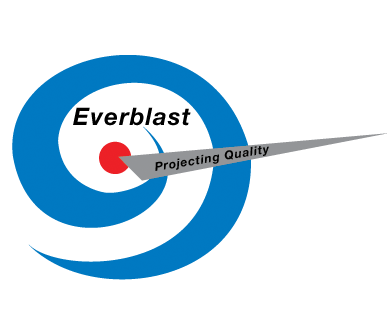Sandblasting nozzles for abrasive blast cleaning
- Shipyard painting and engineering work e.g. steel cleaning and profiling before paint application
- Dry Blast cleaning - using dry abrasives such as coal slag, garnet, aluminum oxide to clean and add profice to hard surfaces like steel.
- Shot Blasting - propelling blast cleaning media (e.g. steel shot) using centrifugal force created by a mechanical spinning device.
- Soda Blast Cleaning - uses Formulated Bicarbonate of soda to clean softer surfaces e.g building walls, aluminum surfaces etc.
-
Steel Grit Blasting - Uses steel grit, shot etc,
- Wet or slurry blasting. Used when dust control is needed especially when surface being blasted has hazardous contaminants.
- Vapor blasting where the water mixing with abrasives is controlled and reduces run off.
- Vacuum Blasting - used where containment is needed and recycling is considered a cost saver.
- Dry Ice Blasting - used in the aviation industry
- Ceramic / Pencil blast cleaning or etching
- Bead blast cleaning
- Shot Peening - to add additional hardness to e.g. steel surfaces.
- Pipe blast cleaning both outer and inner surfaces.
- Monument cleaning
- Glass and stone etching
- bead blasting
- Heat exchanger tubes
- Wooden structure surface cleaning e.g. removal of smoke and soot.
- Paint removal off aircraft surfaces.
- Graffiti removal
- Stone and brick work cleaning
- Line striping work
- Watertank work
- Rail car work
We offer a wide range of straight bore sand blast nozzles and inserts made from tungsten carbide, Silicon carbide or boron carbide. These inserts are widely used in suction and pressure style blast cleaning guns. They are used for close up blast cleaning of smaller parts e.g. in blast cabinets or workshop applications for example auto repair shops. Our short armor jacketed, straight bore boron / tungsten carbide nozzles are supplied as standard with 3/4" NPSM threads.
Medium length ATV venturi nozzles offer higher performance than short straight bore nozzles. How do ATV nozzles achieve this?
The answer is: UT nozzles have a straight bore; ATV nozzles have a venturi style bore. Having a venturi shaped bore increases exit velocity. Higher exit velocity means higher abrasive impact speeds & improved productivity. If you are using UT style nozzles and need higher performance, then look at our ATV nozzles. Available in a choice of Boron carbide or Tungsten carbide.
Choice of jacket styles and materials.
We offer a choice of different jackets to protect carbide sandblasting liners. From our all armored alloy jackets and threads that provide a very high level of protection against ricochet wear and impact to lighter weight thermoplastic plastic jackets that provide good impact protection for liners.
High Performance Nozzles:
Everblast makes a range of high quality Boron carbide High performance XLBC blast cleaning nozzles. These light weight nozzles have an advantage over other high performance nozzles in that they offer superior wear properties typical of boron carbide. These nozzles blast faster and are great to use when large surface areas need blast cleaning. They can be used for dry and wet blasting. Our Venturi Nozzles are available with either 1-1/4" NPSM fine threads or 2" coarse threads.
Angle Nozzles:
We offer a comprehensive range of angle nozzles that can direct abrasive flow at 45 degrees (approx) this is a great help when blast cleaning difficult to reach areas. These 45 degree sandblasting nozzles are available with one, two or three, forward shooting exit ports. We also offer a 1/2" O.D. blast cleaning probe for blast cleaning inside small (narrow) deep holes. Also avaible are 90 degree blast cleaning nozzles.
Wet Blasting:
Wet blasting and soda blast cleaning has become popular, as these methods offer a way of controlling dust - please see our range of Wet blasting nozzles. However, like many methods of blast cleaning there are pros and cons. It is important that each blast cleaning company researches to find out which method of blast cleaning (wet or dry) offers optimal results, given the type of surface preparation work being undertaken, abrasives used & coating that may subsequently be applied.
Guide on Estimated Nozzle Service Life in hours.
All figures are indicative and given for nozzle comparison purposes only. Actual nozzle service life will depend on operational variables, such as blast pressure, media dimensions and media particle profile. All figures are approximate.
| Nozzle Liner Material | Steel/Grit Shot (hours) | Expendable Abrasives (Hours) | Aluminum Oxide (Hours) |
| Ceramic | 20-40 | 10-30 | 1-4 |
| Tungsten Carbide | 500-800 | 300-400 | 20-40 |
| Silicon Carbide/Silicon Nitride | 600-1000 | 400-600 | 50-100 |
| Silicon Composite | 1400-2300 | 700-1450 | 180-900 |
| Boron Carbide | 1500-2500 | 750-1500 | 200 - 1000 |
